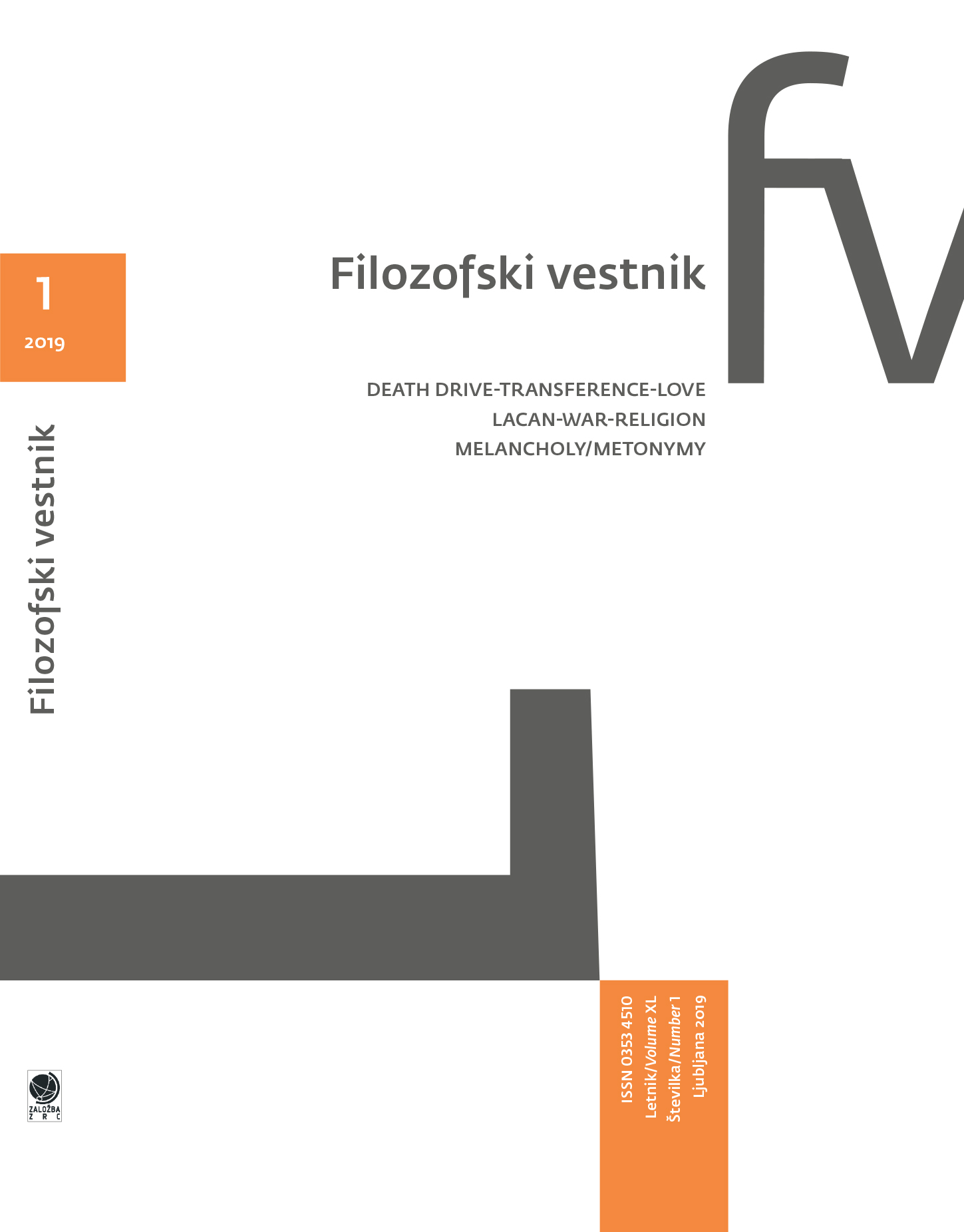Umetnost med afektom in indiferenco pri Heglu, Adornu in Rancièru
Ključne besede:
estetika, filozofija, afekt, indiferenca, avtonomija umetnosti, politična umetnost, Heglova estetika, estetski režim umetnostiPovzetek
Kakšno vlogo lahko estetika kot filozofija avtonomne umetnosti pripiše afektu? Od Hegla naprej se avtonomija umetnosti manifestira kot indiferentna oblika videza, ki »nam stoji nasproti kot blažen bog«. Ali mišljenje umetnosti skozi afekt potemtakem nujno pomeni vnos heteronomije – skrite ekonomije, ki spodkoplje indiferentno površino avtonomnega videza? Članek gre v nasprotno smer in razišče afektivnost, notranjo sami indiferenci umetnosti. Obravnava Heglove težave pri razločitvi božanske indiference idealne umetnine od ironične indiference, ki napoveduje konec umetnosti, Adornovo opažanje, da je umetnost zavezana izražanju trpljenja, ki pa ga lahko izrazi le v do njega bistveno indiferentnem mediju, ter Rancièrovo reafirmacijo indiference kot specifično estetske moči afekcije skozi premestitev koordinat čutnega izkustva. Hegel in Adorno sta zagovarjala indiferenco umetnosti, a jo vseeno poskušala utemeljiti na nečem substancialnem, po Rancièru pa je indiferenca edina substancialnost, ki jo umetnost lahko ima.
Prenosi
Prenosi
Objavljeno
Kako citirati
Številka
Rubrike
Licenca
Avtorji jamčijo, da je delo njihova avtorska stvaritev, da v njem niso kršene avtorske pravice tretjih oseb ali kake druge pravice. V primeru zahtevkov tretjih oseb se avtorji zavezujejo, da bodo varovali interese založnika ter da bodo povrnili morebitno škodo.
Podrobneje v rubriki: Prispevki





